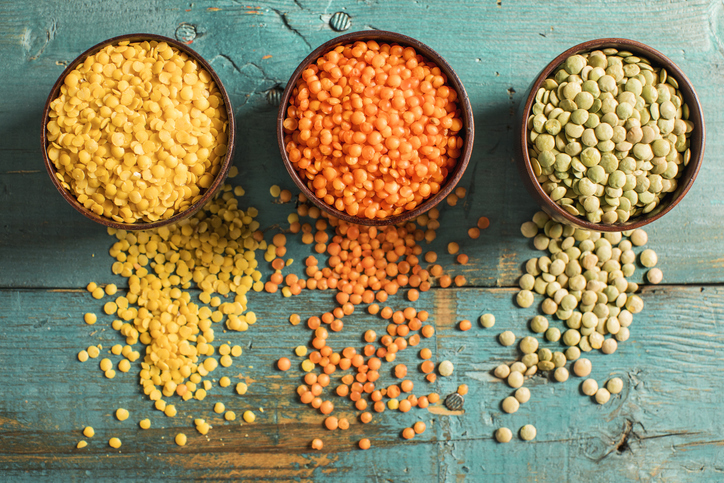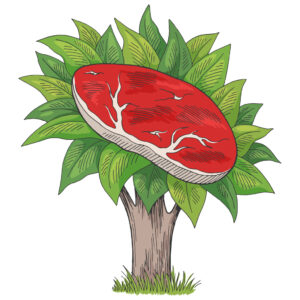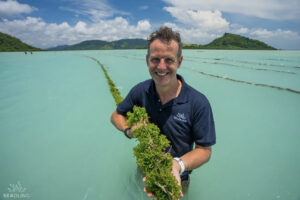Two recent research reports have shine a light on the potential role that pulses could play in delivering the Asia-Pacific region’s protein needs.
Set to be released in full during a public session tomorrow at the Future Food Asia 2021 conference, ‘The Future of Pulses in Asia Pacific’ concludes that Asia must grow, eat, and trade more pulses amid growing demand for alt-protein, changes in climate and soil, and the need for more sustainable plant protein sources beyond the likes of soy, wheat, and rice.
The report — compiled by ID Capital with backing from Bühler, the USA Dry Pea & Lentil Council, and the US Dry Bean Council — highlights dry peas, chickpeas, mung beans, fava beans, and lentils as the most promising candidates, given their “availability and affordability in the [Asia-Pacific] region” as well as their “especially strong nitrogen fixation capacity, protein density, presence of micronutrients, and high processing functionality for starch, fiber, and protein.”
“When we started looking at the alt-protein market, we saw everyone adopting soy, for clear reasons – mainly the familiarity with the ingredient itself, given that soy textures have been around for decades,” ID Capital vice president Abhinav Mehra told AFN.
“But the one thing everyone talks about is nutrition, [and] soy is definitely not meeting our nutrition requirements. We felt that pulses could be the next area of innovation for plant protein segment, because lots of the technologies and processes already applied to soy [to produce alt-protein products] can be just as easily applied to pulses, but with higher nutritional and economic benefits.”
Cropportunities abound
GFI APAC — the regional branch of the Good Food Institute — released its own report into Asia Pacific’s potential as a pulses powerhouse last December.
‘Asian Cropportunities: Supplying Raw Materials for Plant-Based Meat’ examines a variety of crops grown in the region that could prove instrumental in the future production of alt-proteins.
Like ID Capital’s report, it is based largely on interviews with key individuals working in industry, as well as third-party data.
GFI’s report finds that “the vast majority of current plant-based meat products” are reliant on soy and wheat as base ingredients.
“While innovative applications of these two ingredients have ushered in a range of successful products, relying exclusively on such a small handful of crops may mean that we are overlooking the massive potential of locally sourced ingredients in Asia that could reduce costs and reap huge rewards for domestic producers,” it states.
Of the four pulses highlighted in the report — chickpea, field pea, lentil, and mung bean — only the field pea is commonly used in plant-based protein products today, despite the others offering a similar protein content and being widely grown throughout the region.
Several constraints are holding back wider adoption of pulses in alt-protein production, according to GFI.
On the one hand, it argues that governments in Asia Pacific can do more to encourage pulse cultivation and uptake by food manufacturers. This might be achieved through extension schemes that help farmers to diversify their crops and extract higher yields, the report suggests.
GFI also found that smallholder farmers — who make up a majority of producers in the region — are generally concerned that they won’t be able to find enough buyers if they ramp up pulse production, while the processors who buy from smallholders are concerned about quality of the produce. “In short, there is distrust on both sides of the relationship that the other is going to fall short of expectations,” the report says.
Meanwhile, startups and corporates developing new alt-protein products often have little reason to incorporate more ‘exotic’ pulses into their formulations, given the industry’s ready familiarity with soy and wheat. The perceived effort required to process pulses, hit the right textures, and remove unwanted flavor profiles is another turn-off for innovators in the space.
“Alternative plant proteins need a competitive value proposition to bring about growth. To compete directly with wheat and soy a major question is how well they texturize,” said Chris Gregson, an independent research consultant working with GFI.
Fractionation, extrusion, and fermentation
According to ID Capital’s research, advances in technology around processes like fractionation, extrusion, fermentation, and flavor masking are smoothing the way for pulses to play a more instrumental role in the production of “high value” alt-protein products. With leading pulse producers like India, Myanmar, and Thailand located in the region, there are also efficiencies to be gained in terms of logistics, supply chains, and localized production.
Moreover, familiarity with pulses as part of the everyday diet in Asian societies “lends itself to consumer readiness for their use in plant-based protein products,” the ID Capital report states, adding that the region benefits from “having a ready market, in form of the noodle industry, for the starch which is the byproduct in the pulse fractionation process.”
“When you fractionate a pulse, something like 65% of that can be starch. So if you’re doing that fractionation in Canada, 65% of your produce is getting exported to Asia, or going to the animal feed industry,” Mehra said.
In Asia, because of the instant noodle industry, much of that [byproduct] — typically, pea starch — has a massive use case for human food production, he added.
“And now, the whole industry is flipping itself on its head – where pea protein is becoming so valuable because of this booming plant protein and alt-meat industry. While other markets don’t know what to do with the starch, if you fractionate pulses in Thailand or China, the market is already there for every single byproduct coming out of that process.”
However, the report underlines numerous barriers to progress that are holding Asia Pacific back from fulfilling its pulse potential. Investments in infrastructure and innovation are required “to drive down prices and drive up scale,” it says.
There are also political hurdles to overcome. Myanmar — which grows as much as 97% of the world’s chickpeas — has an uncertain economic future following a military coup earlier this year; while India — which alone produces more than half of the world’s pulses — has introduced restrictions on ag exports.
Though these factors have a negative impact on the price stability that food processors need, there are some unintended plus points, Mehra suggested.
“In India, because they now have to be self sufficient, they need to be able to grow every product to meet domestic requirements. Previously, for high quality pulses they used to import from Australia or Canada – while they’d tend to grow the mass-consumed, medium to low quality pulse at home. But now they need to produce the whole spectrum.”
This means that, while exports remain restricted, India has developed domestic production of the higher-quality product in demand from alt-protein companies and their consumers.
“It all starts with demand. If people in the industry start demanding more from plant protein products, alt-protein manufacturers will have to start looking at more ingredients beyond what they’re already using,” Mehra said.

















Sponsored
International Fresh Produce Association launches year 3 of its produce accelerator